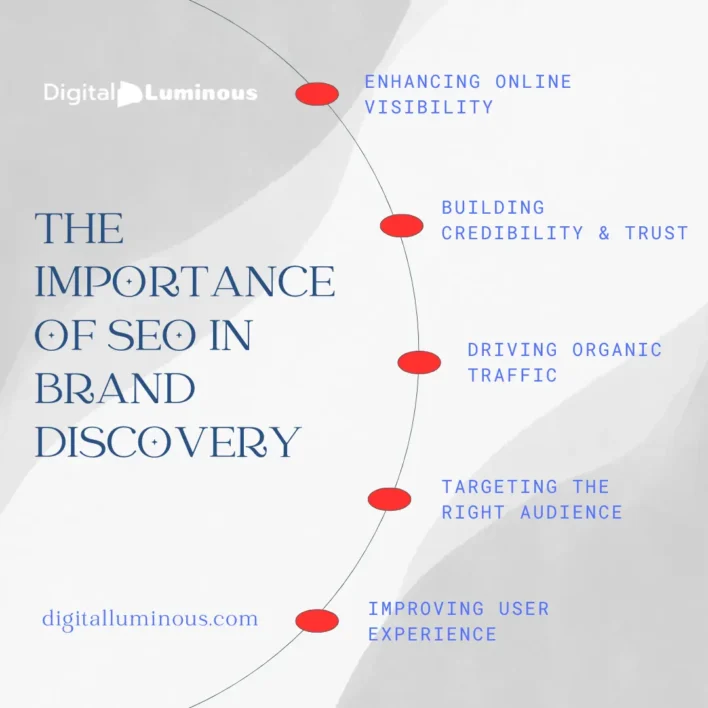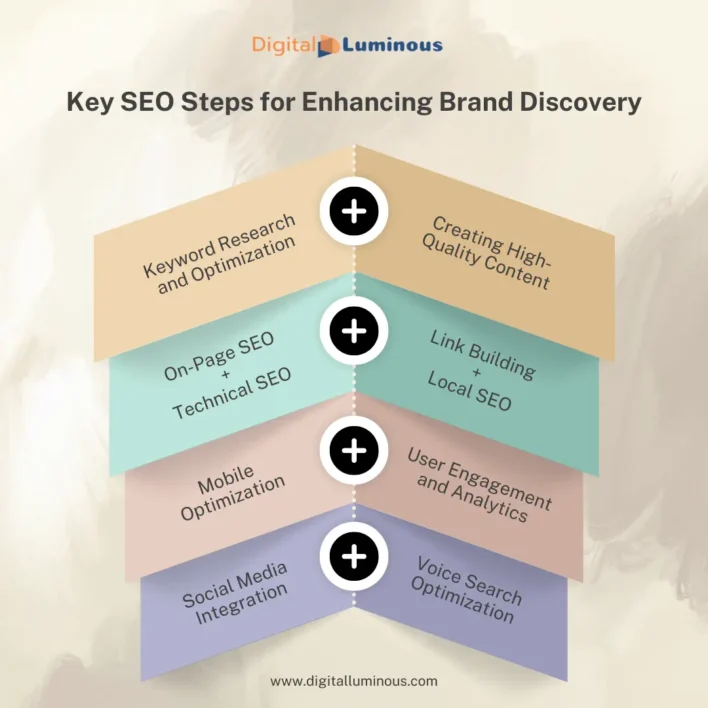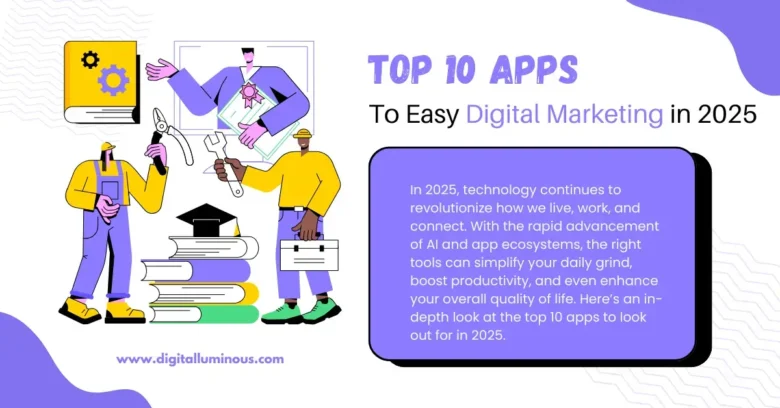
In the ever-evolving digital landscape, businesses constantly seek new ways to increase their visibility and reach their target audience. One of the most effective strategies to achieve this is through Search Engine Optimization (SEO). SEO is not just about improving search engine rankings; it significantly impacts brand discovery, helping businesses connect with potential customers and build a strong online presence.
In this article, we will delve into how SEO impacts brand discovery, explore various strategies, and provide real-world examples from different cities across the USA to illustrate these concepts.
The Importance of SEO in Brand Discovery

Enhancing Online Visibility
The primary goal of SEO is to improve a website’s visibility on search engine results pages (SERPs). When your website ranks higher in search results, it is more likely to be seen by users, increasing the chances of brand discovery.
For instance, if a local bakery in Austin optimizes its website for keywords like “best bakery in Austin,” it is more likely to appear at the top of search results when someone searches for bakeries in the area. This increased visibility helps attract more visitors to the website, potentially converting them into customers.
Building Credibility and Trust
Websites that rank higher in search results are often perceived as more credible and trustworthy by users. This perception is because search engines like Google use complex algorithms to rank websites based on their relevance and quality. By implementing effective SEO strategies, such as creating high-quality content and obtaining backlinks from reputable sites, businesses can improve their rankings and build trust with their audience.
For example, a law firm in Chicago that consistently ranks on the first page for “top lawyers in Chicago” is likely to be seen as a credible and reliable source for legal services.
Driving Organic Traffic
SEO helps drive organic traffic to your website, which is crucial for brand discovery. Organic traffic refers to visitors who find your website through unpaid search results. Unlike paid advertising, which requires continuous investment, organic traffic is sustainable and cost-effective in the long run. By optimizing your website for relevant keywords and providing valuable content, you can attract a steady stream of visitors interested in your products or services.
For instance, a fitness center in San Diego that publishes informative blog posts about fitness tips and workout routines can attract fitness enthusiasts searching for related content, thereby increasing brand awareness.
Targeting the Right Audience
SEO allows businesses to target specific audiences based on their search behavior and intent. By understanding what keywords and phrases your target audience is using, you can tailor your content to meet their needs and preferences. This targeted approach helps attract users who are more likely to be interested in your brand, increasing the chances of conversion.
For example, a tech startup in San Francisco that optimizes its website for keywords like “innovative tech solutions” and “startup technology” can attract potential clients and investors looking for cutting-edge technology solutions.
Improving User Experience
A positive user experience is essential for brand discovery, and SEO plays a crucial role in enhancing it. Search engines prioritize websites that offer a seamless and enjoyable user experience, including fast loading times, mobile-friendly design, and easy navigation. By optimizing these aspects of your website, you can improve user satisfaction and increase the likelihood of visitors returning to your site.
For instance, an e-commerce store in New York City that ensures its website is mobile-friendly and loads quickly is more likely to retain customers and encourage repeat visits.
Key SEO Strategies for Enhancing Brand Discovery

Keyword Research and Optimization
Keyword research is the foundation of any successful SEO strategy. By identifying the keywords and phrases that your target audience is searching for, you can optimize your website’s content to rank for those terms. Tools like Google Keyword Planner, Ahrefs, and SEMrush can help you find relevant keywords with high search volume and low competition.
For instance, a coffee shop in Seattle might discover that “best coffee in Seattle” and “Seattle coffee roasters” are popular search terms and optimize its website content accordingly.
Creating High-Quality Content
Content is king in the world of SEO. Creating high-quality, informative, and engaging content is essential for attracting visitors and encouraging them to spend more time on your site. Blog posts, articles, videos, infographics, and other types of content can help address your audience’s needs and establish your brand as an authority in your industry.
For example, a dental clinic in Miami could publish blog posts about dental hygiene tips, common dental procedures, and patient testimonials to provide valuable information and build trust with potential patients.
On-Page SEO
On-page SEO involves optimizing individual pages on your website to improve their rankings. This includes using relevant keywords in your content, optimizing meta tags (title tags, meta descriptions), using header tags (H1, H2, H3) effectively, and ensuring your URLs are clean and descriptive. Additionally, incorporating internal links to other pages on your website can help improve navigation and keep visitors engaged.
For instance, a clothing boutique in Los Angeles could optimize its product pages by including relevant keywords, clear meta descriptions, and high-quality images to attract potential customers searching for fashion items.
Technical SEO
Technical SEO focuses on improving the technical aspects of your website to enhance its performance and search engine rankings. This includes optimizing website speed, ensuring mobile-friendliness, creating an XML sitemap, using structured data (schema markup), and securing your website with HTTPS.
For example, a real estate agency in Boston could improve its website’s loading speed and mobile responsiveness to ensure a smooth browsing experience for users searching for properties.
Link Building
Link building is the process of acquiring backlinks from other reputable websites to improve your site’s authority and rankings. Search engines view backlinks as votes of confidence, so the more high-quality backlinks you have, the more credible your site appears. Strategies for link building include guest blogging, reaching out to influencers and industry experts, and creating shareable content that naturally attracts links.
For instance, a travel agency in Orlando could collaborate with travel bloggers and influencers to write guest posts and obtain backlinks to its website.
Local SEO
Local SEO is essential for businesses that rely on local customers. By optimizing your website for local search terms and creating a Google My Business profile, you can increase your visibility in local search results and attract customers in your area. This includes using local keywords, obtaining reviews from customers, and ensuring your business information (name, address, phone number) is consistent across all platforms.
For example, a restaurant in Denver could optimize its website for local keywords like “best restaurants in Denver” and encourage satisfied customers to leave positive reviews on Google.
Mobile Optimization
With the increasing use of mobile devices, optimizing your website for mobile is crucial for SEO. A mobile-friendly website ensures that users have a positive experience, regardless of the device they are using. This includes using responsive design, optimizing images, and ensuring fast loading times.
For instance, a fitness app company in San Francisco that ensures its website and app are optimized for mobile users can attract and retain more customers.
User Engagement and Analytics
Monitoring user engagement and analyzing website data are essential for understanding how visitors interact with your site and identifying areas for improvement. Tools like Google Analytics can provide insights into user behavior, such as the most visited pages, average session duration, and bounce rate. By analyzing this data, you can make informed decisions to optimize your website and improve user experience.
For example, a financial services firm in New York could use analytics to identify which blog posts are most popular and create more content on similar topics to attract and engage their audience.
Social Media Integration
Integrating your SEO strategy with social media can amplify your brand’s reach and visibility. By sharing your content on social media platforms and engaging with your audience, you can drive more traffic to your website and improve your search engine rankings. Social signals, such as likes, shares, and comments, can also indirectly improve SEO by increasing the visibility and credibility of your content.
For instance, a skincare brand in Los Angeles that actively shares its blog posts and engages with followers on Instagram and Facebook can attract more visitors to its website and improve brand discovery.
Voice Search Optimization
With the rise of voice-activated assistants like Siri, Alexa, and Google Assistant, optimizing your website for voice search is becoming increasingly important. Voice search queries are often longer and more conversational, so incorporating natural language and long-tail keywords into your content can help you rank for voice searches.
For example, a home improvement store in Houston could optimize its website for voice search queries like “where to buy affordable home improvement supplies in Houston.”
Content Marketing and SEO Synergy
Content marketing and SEO go hand in hand. By creating high-quality, SEO-optimized content that addresses your audience’s needs and interests, you can improve your search engine rankings and drive more traffic to your website. Regularly publishing blog posts, articles, and other content can help keep your website fresh and relevant, attracting both new and returning visitors.
For instance, a software company in Seattle that consistently publishes informative blog posts about the latest tech trends and solutions can attract tech enthusiasts and potential clients searching for related content.
Case Study: SEO Success Story in Dallas
To illustrate the improve of SEO on brand discovery, let’s look at a real-world example from a small business in Dallas. A local home décor store, “Elegant Interiors,” implemented a comprehensive SEO strategy to improve its online visibility and attract more customers. By conducting keyword research, the store identified popular search terms like “luxury home décor Dallas” and “designer furniture Dallas.” They optimized their website content, including product descriptions and blog posts, to incorporate these keywords.
In addition to on-page SEO, Elegant Interiors focused on local SEO by creating a Google My Business profile and encouraging satisfied customers to leave reviews. They also invested in technical SEO, ensuring their website was mobile-friendly and had fast loading times. To build backlinks, the store collaborated with interior design bloggers and influencers, writing guest posts and obtaining links to their website.
As a result of these efforts, Elegant Interiors saw a significant increase in organic traffic and online visibility. Their website began ranking on the first page of search results for their target keywords, attracting more visitors and increasing sales. This case study demonstrates how a well-rounded SEO strategy can improve brand discovery and drive business growth.
In today’s digital age, SEO is a powerful tool that can significantly improve brand discovery. By enhancing online visibility, building credibility, driving organic traffic, targeting the right audience, and improving user experience, SEO helps businesses connect with potential customers and establish a strong online presence. Implementing effective SEO strategies, such as keyword research, high-quality content creation, on-page and technical SEO, link building, local SEO, mobile optimization, user engagement analysis, social media integration, voice search optimization, and content marketing, can lead to sustainable growth and long-term success.
Whether you are a small business in Dallas or a large corporation in New York, understanding and leveraging the power of SEO can help you stand out in a competitive market and attract more customers. By staying up-to-date with the latest SEO trends and best practices, you can ensure your brand remains visible, relevant, and discoverable in the ever-changing digital landscape.
FAQs
What is HTTPS, and why is it important for website security?
SEO, or Search Engine Optimization, is the process of improving a website’s visibility on search engines like Google. It is crucial for brand discovery as it enhances online presence, drives organic traffic, builds credibility, and helps target the right audience, ultimately leading to increased brand awareness and customer engagement.
How does SEO enhance online visibility?
SEO enhances online visibility by improving a website’s ranking on search engine results pages (SERPs). Higher rankings mean more exposure to potential customers. By optimizing for relevant keywords and creating quality content, businesses can appear in top search results, making it easier for users to discover the brand.
Can SEO help build credibility and trust for my brand?
Yes, SEO can help build credibility and trust. Websites that rank higher in search results are often perceived as more authoritative and trustworthy. Implementing SEO strategies such as quality content creation and obtaining backlinks from reputable sites can enhance your site’s credibility and foster trust with your audience.
What role does content play in SEO?
Content is vital in SEO as it helps attract and engage visitors. High-quality, relevant content that incorporates targeted keywords can improve search engine rankings. Regularly updated content such as blog posts, articles, and videos can address audience needs, establish authority, and drive organic traffic to the website.
What is the importance of keyword research in SEO?
Keyword research is essential in SEO as it identifies the terms and phrases potential customers use to search for products or services. By optimizing website content for these keywords, businesses can improve their search engine rankings, attract the right audience, and increase the chances of brand discovery.
How does on-page SEO differ from technical SEO?
On-page SEO involves optimizing individual pages on a website to improve search rankings. This includes keyword usage, meta tags, and content quality. Technical SEO focuses on improving the website’s backend elements, such as site speed, mobile-friendliness, and structured data, ensuring search engines can crawl and index the site effectively.
Why is link-building important for SEO?
Link building is important for SEO because search engines view backlinks as votes of confidence from other sites. High-quality backlinks from reputable sources can significantly boost a website’s authority and search engine rankings, leading to better visibility and increased brand discovery.
What is local SEO and how can it benefit my business?
Local SEO optimizes a website to attract local customers. It involves using local keywords, obtaining customer reviews, and maintaining consistent business information across platforms. This helps businesses appear in local search results and attract customers in their area, enhancing brand visibility and discovery.
How does mobile optimization impact SEO?
Mobile optimization is crucial for SEO as search engines prioritize mobile-friendly websites in search rankings. A mobile-optimized site ensures a seamless user experience on all devices, reducing bounce rates and increasing user engagement, which can positively impact search engine rankings and brand discovery.
What is voice search optimization and why is it important?
Voice search optimization involves tailoring website content to accommodate voice queries. With the increasing use of voice-activated assistants, optimizing for natural language and long-tail keywords can help a website rank for voice searches, enhancing visibility and attracting users who prefer voice searches.
How can social media integration boost SEO?
Social media integration can boost SEO by driving traffic to a website and increasing content visibility. Engaging with audiences on social platforms, sharing content, and obtaining social signals like likes and shares can indirectly influence search engine rankings, enhancing brand discovery and online presence.
What is the relationship between content marketing and SEO?
Content marketing and SEO work synergistically to improve online visibility. High-quality, SEO-optimized content addresses audience needs and interests, boosting search engine rankings. Regularly publishing relevant content can attract and engage visitors, enhance brand authority, and drive sustainable organic traffic to the website.


